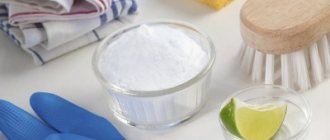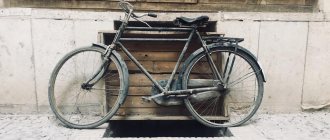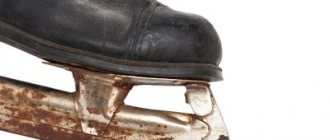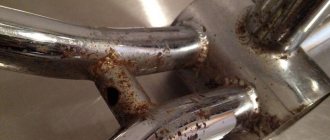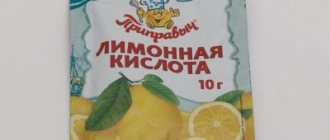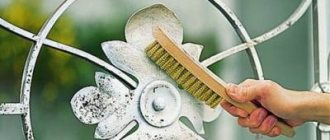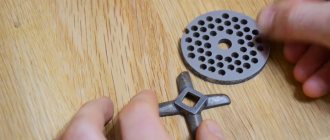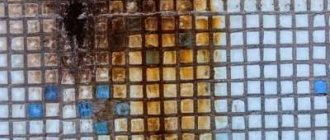by Alexey | Cleaning Tools | Friday, December 03, 2021
| Follow Make-Self.net on Facebook and be the first to read our articles. |
Rust is completely preventable, but it is often unavoidable if you have a large number of metal tools. Those tools that you left outside in the rain and snow are now unusable, but that doesn't mean you have to throw them away! There are several different methods you can use to clean rusty tools so they are ready for use.
Why do tools rust?
You want to clean rusty tools, but it's also important to understand how it happened in the first place. Rusty tools are the result of water remaining on the steel for a long period of time. Rust forms when oxygen and water react with iron . If a tool is constantly exposed to water and oxygen, rust can form within four or five days. If by the time you realize that your tools are rusty, corrosion has not yet set in (that's when holes start to form in the metal), you can still fix the situation by cleaning the rust off.
When it comes to removing rust, you have several options. Find out the best tips for removing rust from tools!
Special anti-corrosion agents
There are several special products that are produced to combat corrosive plaque.
Solvents
To remove rust from metal coatings, use Schnell-Rostloser. This cleaner has good qualities that allow you to get rid of traces of oxidation. You can also treat the iron product with Spirit-1 solvent. Its advantages include:
- displacement of moisture particles from iron;
- formation of a protective layer on the treated coating;
- cheapness.
Converters
Converters are means that convert corrosion particles into a durable film. Such compositions are available in the form of solutions, emulsions and suspensions.
Experts recommend using converters not only to remove rust stains, but also to protect the product from further corrosion.
Cleaning with sandpaper
When using sandpaper to remove rust, you will need a little bit of effort, as well as coarse and fine grit sandpaper. Start by cleaning the tool of dirt and grease, then dry it completely . Once it's dry, take some coarse sandpaper and sand off any rust from the surface , then switch to a finer grit so you can smooth out any grooves or marks left by the coarse sandpaper. If sandpaper doesn't help remove deeper rust, you'll have to double down on one of the other methods for removing rust from tools.
Mechanical removal
Rust is a product of spontaneous destruction of iron and its alloys (steel, cast iron). A yellow-red or greenish coating appears due to oxidation of the metal under the influence of water, oxygen or chemical oxidizing agents, in particular acids.
If the metal has only slightly oxidized, the rust can be easily removed using hard abrasive devices, the most popular of which are:
- sandpaper;
- drill attachments;
- metal brush;
- sander
Aluminum foil can remove rusty deposits. Do this:
- Tear off a large piece of foil and roll it into a tight ball.
- Dip a foil ball into vinegar.
- Use the foil as a brush to remove rust - rub the rusty areas with force. Foil is less rough than steel wool, but it removes rust perfectly.
How to remove rust: NUR.KZ
WD-40 and steel wool
WD-40 is a product specifically formulated to break the bonds between rust and the metal surface to which it is bonded. When you are trying to remove light surface rust from your tools, spray it directly onto the rusty area and let it sit for ten minutes . Once you've allowed the WD-40 to loosen the rust, take a piece of steel wool and scrape away the rust until the tool is clean. Wash the tool and dry it thoroughly before putting it back in the toolbox.
Sandblasting
An alternative mechanical way to remove corrosion is a sandblasting machine, which can easily remove even stubborn rust. The necessary equipment is quite expensive, so purchasing it only makes sense for processing a large number of damaged tools.
The main advantage of sandblasting compared to metal brushes is the ability to process even hard-to-reach areas. However, sandblasting is not recommended for use on sheet surfaces. The fact is that sand released under high pressure can leave a serious dent or even a hole in thin metal.
White vinegar
White vinegar is just what you need to remove those stubborn patches of rust that you can't seem to remove with other methods. Acetic acid will help break down rust. To get the most out of vinegar on your tools, you need to completely immerse them in water. For small items like wrenches, you can submerge them in a small bowl, but larger tools will require a bucket or large container. Leave the tools in the vinegar overnight. At a minimum, you should wait at least six hours.
Unusual ways
You can remove traces of corrosion using unusual but effective methods.
Coca Cola
You can quickly get rid of unpleasant traces of metal oxidation from a stroller, household utensils, and even a car body with the help of a popular drink - Coca-Cola. Soda should be poured into a plastic tray or container, and then items damaged by corrosion should be placed in it. Usually a few hours are enough for the drink to corrode even severe rust.
Soda can be used to remove rust from a circuit board or other delicate products. In this case, you need to soak a rag or sponge in Coca-Cola and wipe the surface. Repeat the action if necessary.
Advice! You can also use cheaper sparkling water. It is important that it contains phosphoric acid, because it is what transforms oxidation.
Ketchup or tomatoes
If there are expired canned tomatoes or ketchup in the refrigerator, do not rush to throw them away, as they can be used to clean metal from red marks. To eliminate them, just apply ketchup, tomato paste or tomatoes on them and leave for 20 minutes. If the damage is severe, the treatment time can be increased. Afterwards, you just need to wash everything well to remove traces of food.
Electrolysis
If a wash or folk remedy is not effective enough, electricity can be used to solve the problem. You need to follow the algorithm of actions:
- Pour warm water into a plastic tub or tray.
- Add a couple of tablespoons of salt or baking soda.
- Take a car battery charger.
- Screw a metal plate to one terminal.
- Connect the part from which you want to remove rust to another wire.
- Dip both ends into the prepared solution and apply current, setting the current to 4-6 amperes.
- Leave for 30 minutes or more.
- Remaining traces can be easily wiped off with a brush or rough sponge.
Use extreme caution when processing metal using this method. Do not remove the product from the bath until the power is turned off.
Choose the right option to remove rust from damaged metal and restore its aesthetics or functionality. To prevent the problem from returning, protect the surface with primer, paint, varnish, oil or another product.
Effective rust remover - video:
Oxalic acid
Oxalic acid is a chemical-based solution that will attack areas of rust that you couldn't remove with sandpaper or vinegar. When working with oxalic acid, make sure you wear appropriate protective clothing and always read the label instructions carefully.
Degrease and clean the tools, dry them thoroughly, and then place them in large containers filled with 5 liters of water. For best results, store each tool in a separate container. Add three tablespoons of oxalic acid to the water , mix thoroughly and let the solution soak for up to 20 minutes. After soaking, you can wash off the softened rust and oxalic acid residues.
Materials
Before removing rust from a tool with your own hands, you should prepare:
- the instrument to be restored;
- screwdriver;
- sandpaper of different grain sizes;
- drill;
- wire brush;
- polish;
- polishing attachment.
Step 1
. The most difficult stage in this work of restoring an instrument is disassembling it. Due to rust, the threads and screws are thoroughly stuck, and it is not easy to unscrew them. It is not possible to do this manually, using just a screwdriver and pliers.
To disassemble the tool into its component parts, you need to place it in a vice. If in your case it’s still not possible to disassemble the instrument, you will have to resort to chemicals that corrode the rust. Be careful with any method of work; you may no longer find similar bolts and screws for old tools. Be careful not to break them, and don't throw away any of the parts.
Step 2
. You will first need to remove dirt, paint and old rust from all elements of the key with a wire brush. During this work, the main contaminants will disappear, and you will already see shiny steel. Don't touch the thread yet.
Step 3
. Continue to remove dirt from previously cleaned elements, trying to clean hard-to-reach places as well. Use 200-gauge sandpaper for this job.
Step 4
. Continue to work, but using paper of a different caliber each time: from 400 to 2000. When stripping, choose one direction of movement and move strictly along the given lines. During the work, some of the metal will also be removed along with dirt and rust. It is important that the material is also washed evenly, and you can clearly see the areas that have already been treated.
Step 5
. Clean the screw and thread using fine-grained sandpaper.
Step 6
. Take the materials prepared for polishing and the drill attachment. Proceed to finishing the metal.
Ready! Ideally, the surface of your old tool should look like new.
Homemade products from a washing machine engine:
1. How to connect a motor from an old washing machine through a capacitor or without it 2. Homemade emery from a washing machine engine 3. Homemade generator from a washing machine engine 4. Connecting and adjusting the speed of a commutator motor from an automatic washing machine 5. Potter's wheel from a washing machine machines 6. Lathe from an automatic washing machine 7. Wood splitter with an engine from a washing machine 8. Homemade concrete mixer
How to remove rust from tools, bolts and nuts with your own hands
- how to remove rust from a tool?
- how to clean rust from a coin?
- how to remove rust from a knife?
There's an answer!
Have you ever been cleaning out your garage and found a bucket of tools that might be wet and rusty?
DO NOT THROW THEM OUT!
There is a simple solution to restore their appearance for very little money, because buying new tools will cost you a decent amount.
So, have you found bags of nuts, bolts and tools corroded? If you do not know about the properties of vinegar, you will think that they are useless, nothing more. Wear gloves to avoid getting rust on your hands, because rust is very difficult to wash off. Gather all your corroded tools, nuts and bolts together. Depending on how many rusty things you find, select a container so that everything will fit. You can use a large basin.
Read also: Density of titanium and aluminum
Place your tools in a bucket and fill the bucket with vinegar until the vinegar covers the contents of the bucket. You won't believe the properties of the almighty vinegar. It will eat up the rust on tools, bolts and nuts!! This will all bubble up and you will watch as the rust starts to rise to the top.
If your tools are very corroded, you will need to leave them for several days, maybe even up to a week. Check them and when you see clean metal then it's time to take them out. Be sure to wear gloves when checking your tools! After taking them out, rinse them under running water and let them dry on a rag, or wipe them dry using the same rag. The vinegar cost practically pennies compared to what new tools would have cost!
- Potatoes remove rust
Fresh potatoes contain oxalic acid, which will help us in this matter. If the rusty spot is small, for example on a knife blade, then sprinkle salt on the cut potato and clean the knife with it. You can simply hold the potato with salt on the rusty spot for about 15 minutes, then rinse and dry.
- Vinegar and lemon juice
We mix these two components, which can be found in any kitchen in equal parts, and apply the mixture to the rust stain on metal, clothing or tiles. For metal, the mixture should be kept for two hours, for other materials, 15-20 minutes. After finishing the treatment, we also wash and dry the surface.
To prepare the composition, mix regular baking soda with water so that you get a not very thick paste. Apply this mixture to the rusty area of the metal surface for 15-20 minutes, then remove it with a steel wool. You may have to repeat this procedure a couple of times.
- Coca-Cola or other soda
Quite a modern rust remover. American housewives first started using Coca-Cola, who noticed that it copes well with rust stains. It's all about phosphoric acid, which dissolves rust. So think again about whether you should drink water that dissolves iron oxide.
Alka-Seltzer
Another miracle of modern chemistry that helps those suffering. It will help us remove rust stains from aluminum cookware. Place the dishes in a container, fill with water and add 4-6 Alka-Seltzer tablets. After 5-10 minutes, rinse with clean water and dry.
Yes, and it will come in handy in this matter. Place ketchup or tomato sauce on the rust stain, wait 5-10 minutes, then wipe dry
- Toilet bowl cleaner CILIT
Take an old rusty scraper:
And immerse it in CILIT toilet bowl cleaner for several hours. Is there a difference before and after?
- As for professional methods,
then there are a large number of rust converters or removers on sale that operate on the same principle - the composition enters into a chemical reaction with rust, transforming it into a dense black or dark blue coating, which can then be painted. As they say, fast and reliable. I recommend using these products to remove rust on water pipes, metal rods of buildings and other solid metal objects. It makes no sense to cite specific means, since it is not worth advertising for any brand, since its products may not suit everyone. Converters and rust removers are sold in auto stores and auto departments of construction supermarkets. So that you do not have to use all these means to remove rust, first of all take care of its prevention - regularly paint metal surfaces, treat them with anti-corrosion impregnation and protect them from moisture.
- Testing the B-52 rust destroyer
The work with Audi has been sooo long... I've been fighting rust for days now. I fight using metal brushes on a drill and flap wheels on a grinder. Flap wheels and steel brushes remove rust well, but are very rough on living metal. Brass brushes are more kind to metal, but they are also less effective at removing rust.
There is, of course, also sandblasting - it removes rust with a bang (it does a good job of cleaning rust from sinks), and it is quite gentle on metal (more precisely, steel). But I don’t use it openly in the garage (maximum in a sandblasting chamber), and the weather doesn’t allow it outside.
In my search for a way to carefully and efficiently remove rust, I came across the B-52 Rust Destroyer.
There are tons of descriptions of his theoretical work on the Internet, but I almost never came across any practical tests. So I decided to test it on a rusty piece of metal from my car.
According to the instructions, the product must be applied to the surface with a layer of 1-2 mm, left for 15 minutes, then rinsed with water, wiped the surface with a dry cloth, and then wiped with solvent 646; if necessary, the procedure can be repeated. Here is my “lab mouse” - a cutout from the rear left fender (above the canopy).
Immediately applied the exterminator locally. The circumstances were such that I lasted not 15 minutes, but 30.
Wipe it off with a wet rag.
The result may not be phenomenal, but it is there! Apply remover to the entire surface.
Periodically rubbed it with a toothbrush.
About 30 minutes after application, I wiped the “mouse” with a wet and then a dry cloth.
Now, it's more fun!
Then I applied the remover again to the entire surface and replaced the toothbrush with a more “fierce” one.
After another half an hour I got this result.
The experiment could have been continued, but I decided that it was enough to transfer the product, because... its effectiveness is now known.
As for the 646th solvent, I will say that it is necessary in the work. They definitely need to wipe the surface at the end of each cycle (after wiping it dry), otherwise the steel begins to turn red right before your eyes!
Finally, a video of the process of destroying rust using Pepsi-Cola, which acts the same as Coca-Cola. Actually, any soda containing phosphoric acid will do.
What to do if the hinge is rusty
If your tool's hinge is rusty but the outside is not, you'll want to take a different approach. Instead of soaking your entire tool in vinegar or trying to scrub it off with steel wool, you'll need an all-purpose oil that serves to clean and lubricate your tools. Apply a small amount of oil to a rag and wipe the rusted hinge . You can also drop a small amount of oil directly onto the assembly while moving the tool back and forth. Once the oil has become a slurry, take a clean rag and wipe off the excess oil. Repeat the process until the tool's hinge works properly again.
How to remove stains without damaging a cast iron surface?
In an effort to quickly deal with rust, you can damage the cast iron and ruin the item. The following recommendations will help prevent possible problems:
- Mechanical removal of corrosion is best done in a horizontal direction in a circular motion. You should not try to chip off damaged areas with blows or vertically directed impact. This increases the likelihood of damage to the cast iron itself.
- When cleaning with chemicals, the preparations should not be left on longer than recommended.
- For advanced cases, the use of cola, salt and soda is ineffective.
- For daily care of cast iron cookware, you should not use abrasive products, as they remove not only dirt, but also a protective layer that protects against corrosion.
How to prevent rust
Controlling humidity and keeping your tools away from water is key to preventing rust. To prevent tools from rusting over time, store them in a dry place. If any of your instruments get wet (rain, snow, etc.), dry them as thoroughly as possible and as soon as possible . It's also best to store all your tools (including power tools) off the ground, especially if they're stored in a workshop or garage, so there's no risk of moisture seeping through the floor.
Sealing the metal parts that are most susceptible to moisture is also a reliable rust protection tactic. Most manufacturers provide a layer of chrome or paint, but older tools often do not have a protective coating. Paint, rubber sealant or wax coating are cost-effective ways to prevent rust and extend the life of your tools.
Follow us on Pinterest for more interesting articles.
Useful short videos from Make-Self.net
Laser processing
As a more technologically advanced means of fighting rust, it is worth considering a laser, which can be used to remove corrosion quickly and effectively. Laser processing has only one disadvantage - the cost of the equipment, which starts from several hundred thousand rubles. Therefore, its purchase makes sense only for commercial use. However, nothing prevents you from contacting workshops that have the necessary equipment.
How to clean pruning shears?
Usually all that is needed to properly clean your pruning shears is rinsing them in warm, soapy water. The same trick applies to garden shears and other tools. After washing, dry the pruners with a cloth or paper towel.
Interesting materials:
How many reps should you do? How many barbell squats should you do? How many sockets should there be in an apartment? How long does it take to get a Schengen visa to Greece? How long does it take to get a Schengen visa to Spain? How long does it take to get a Schengen visa to Italy? How many exercises should you do for one muscle group? How many back exercises should you do? How long should you do morning exercises? How long does it take to get a Schengen visa?


